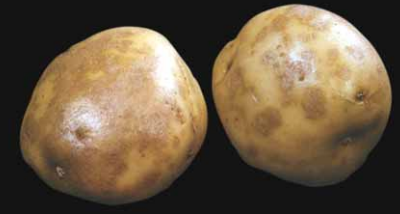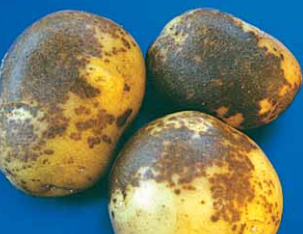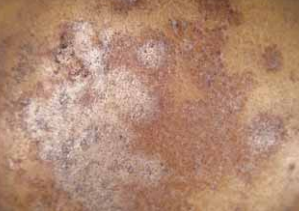Pathogen. The silver scurf fungus overwinters mainly on infected seed tubers. It can also survive for at least one year on decaying organic matter in the soil, indicating that soil may be a source of inoculum.
On infected tubers, the fungus produces spores only at the edges of the lesions. Thus, seed tubers with the surface completely covered by silver scurf do not spread the disease because the fungus cannot produce spores.
Disease development. Spores produced on seed tubers wash onto new tubers. Infection takes place through lenticels and directly through the
skin. The infection remains confined to the skin tissue, causing it to loosen. Air trapped under the loosened skin reflects light, resulting in the silvery sheen typical of infected potatoes.
Silver scurf lesions may be difficult to detect at harvest, particularly if the tubers are not washed. Disease incidence increases when potatoes are left in the ground after maturity and are harvested late. High humidity in the fall also increases silver scurf damage.
In storage, the tubers lose water through the lesions, so some shriveling and wrinkling may occur.
Spores produced on infected tubers spread the disease in storage. High humidity is essential for the spread of silver scurf in storage.
Primary infections or tuber infections initiated in the field usually develop at the stem end of the tuber. By contrast, secondary infections or tuber infections that develop in storage may cover a major portion of the tuber and start as dark-brown to black, circular lesions on several areas of the tuber.
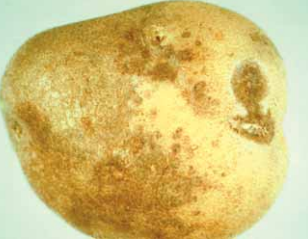
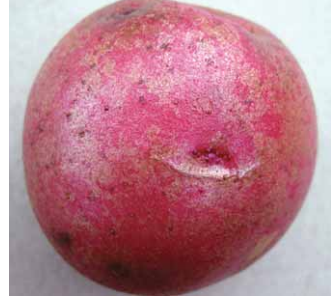
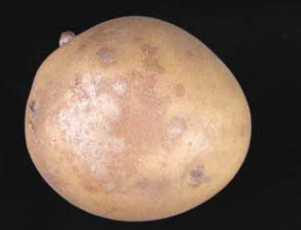
right develop оn the same tuber
